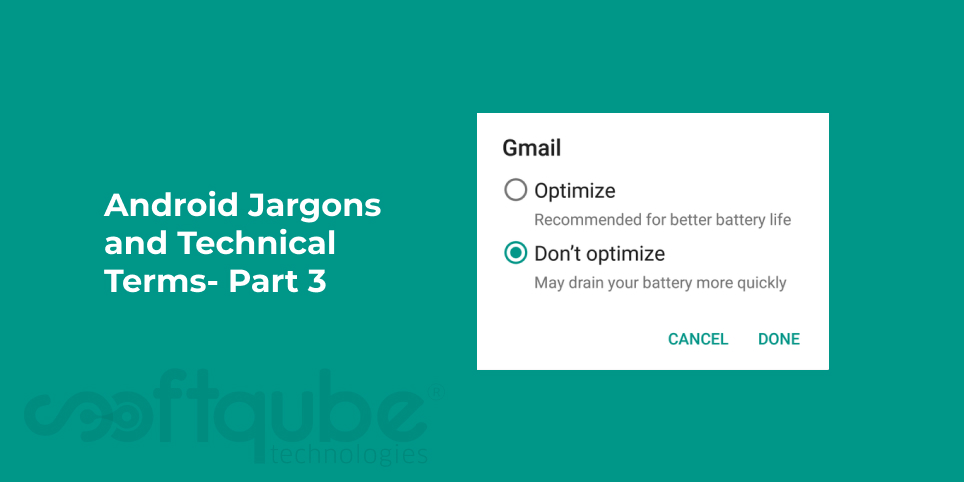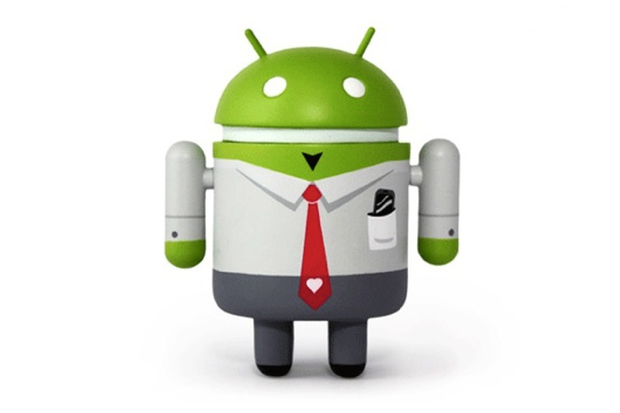
Android Jargons and Technical Terms- Part 3
Hey Friends, New Year has arrived and we are all set with our new strategies to achieve our targets. Softqube Technologies wishes you a wonderful New Year to all its loyal readers & viewers; May this year brings lots of successful moments in your career.
We will continue sharing our knowledge with you and will keep you benefitted with latest trends and updates of IT industry. Today, in this blog post we will share with you some more of the Android technical terms and Jargons.

Previously, we have shared many such terms with you and here are few more. Hey wait, before actually discussing the technical part; I am sure you all will have one question “Why the first blog of this New Year is related to Android?
Reason is : As we discussed in our previous blogs; 2016 is going to be mobile centric and hence people will search more for android related news and updates as well as more of the developers will consider Android App Development as a good career option.
Keeping all these things in mind; we decided to begin New Year with something that is going to get more importance in the entire year. So, let’s begin and know some more Android terms:
Few more Android Technical Terms:
- OLED & AMOLED: OLED stands for Organic Light Emitting Diode. This is a specific kind of display technology. OLEDs discharge their own light and hence they don’t need any backlights. AMOLED differs slightly from OLED technology which is more often used in Smart Phones.
OLED displays have wonderful colour reproduction with fast switching speeds. The pixels emit their own light and hence they are completely black when they are off. Recently, there are OLED displays that are as bright as LCDs. But, these tend to be more expensive.
- Open GLES: This is a set of programming APIs and technologies that developers can use as the application basis which employ 3D rendering. There are several games developed using OpenGL ES.
This is a pared down version of OpenGL that is developed for devices like smartphones and tablets. Most of the 3D games that you play on Android phone are developed with OpenGL ES.
- Overflow Button: You use an Android Phone, right? Have you seen those three dots that are seen in the upper right corner of the screen in many Android apps?
This is called the Overflow button.Just tap it and you will get additional options as well as tools or settings in an app’s toolbar.
- Overlay: This is the customized interface developed by smartphone manufacturers. Most of the custom overlays feel and work similarly to unmodified stock in Android. However, these are modified to suit manufacturers’ and carriers’ needs.
Some overlays are bundled with apps for specific devices. Let’s say there’s a custom Android version for Samsung Galaxy devices. These include Samsung’s TouchWiz interface as well as Apps like Samsung Pay.
In reality, most of the manufacturer “overlays” are not just about overlaying a new interface on the top of Android. The manufacturer has its own individual version of Android.
It has its own features, interface and hardware optimizations. There are various features for the carrier from whom you have purchased the phone. This is one of the reasons why android systems take long time to update.
The custom versions of Android are always known as “Overlays”.
- Qi & PMA: These are involved in wireless charging technology. This includes LG, HTC and Verizon with Qi while PMA standard is backed by AirFuel Alliance. It is a group that consists of companies like AT&T, Broadcom, Intel, Powermat, Duracell and Starbucks.
- Quick Charge: It takes several hours to get the phone battery completely charged. Quick Charge helps to bring up things. This is the technology offered by QualCom and this can increase the phone’s battery charging speed by 75%.
In order to take advantage of Quick Charge, it is necessary to have a device that supports it as well as its wall adapter. Other mobile phone companies have developed their own fast charging capabilities in their phones.
- Rooting: Android has various security precautions to save your phone from unauthorized parties who can mess up your phone too badly. Rooting your phone means to bypass security measures.
This allows you to customize it in several ways which is not possible otherwise. One can even replace the Android Os with something like Cyanogenmod.
Rooting means getting access to the operating system which helps you to change or replace such OS parts which are not repaired.
- Smart Lock: It is advisable to protect the phone with a passcode or password. However, people find it boring to enter it every time the phone is taken out of the pocket.
The smart lock feature of Android easily discovers the phone when it is with you and it gets unlocked. It offers various methods to unlock the phone. Let’s say when your phone is connected to a particular Bluetooth device or is in a particular location.
This Smart lock is developed into Chrome OS and it works better with passwords.
- Vanilla Android: It is also known as “Stock Android”. It is used to describe pure Android. It possesses Google’s interface, features, apps and nothing else.
There are several phones that run unmodified versions of Android. Some manufacturers have their own Android versions which look like Stock Android. These have very precious few modifications that can be used to enable privileged features.
- USB C type: There are many of the USB connectors. One is USB type-A; which mostly seen in the computer. USB type B which is mostly available in printers. Mini USB and Micro USB which are found in devices as well as tablets.
USB type C is a brand new USB connector which is a bit larger than Micro USB and more flexible than any other kind of USB ports. USB C connectors are easily reversible.
Hence, one doesn’t need to identify the right side to get connected. All the devices must have USB 3.1 in order to use USB Type C.
- Wake Lock: We all have a setting in our phone where we decide after how many minutes we want our mobile phones to sleep as this helps to save battery. But there are times when you don’t want your mobile to sleep. For instance, while watching a movie, a video or chatting via Instant Messengers.
Here, this feature known as Wake Lock is useful. It is a feature that comes in built in Android system. This feature forces the app to keep the phone awake till the task is over.
Wake Lock is usually a term used only when the CPU is awake and mobile screen is off.
- X86: If you are very well aware about PC hardware then you will easily understand what is X 86. It is a name given to the processor architecture that is popularized by intel and used by majority of PCs.
Intel’s Pentium, Core lines and Celeron, all AMD’s processors are x86 processors. One cannot find X86 in most of the Android Smart phones and tablets. But those that use Intel’s Atom processors are based on X86 architecture.
Wind Up:
So, here completes the entire list of all Android terms and Jargons. Learn them all and you will be ready to understand Android in a perfect manner. For more such guides related to Android world, keep reading our blogs.
For developers, knowing all the Android Jargons and Terms will help you to develop an Android app in a perfect manner as you will have very less confusions about what a term means.
Learn more about Android App Development, stay tuned with us.

